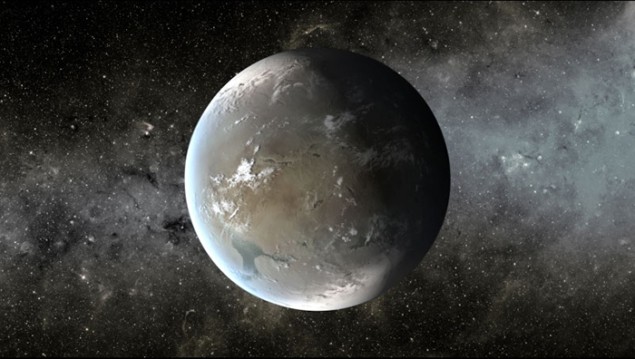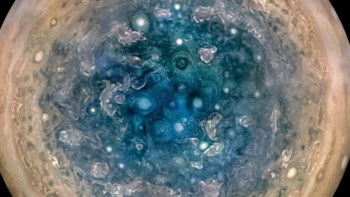
Even a thin atmosphere can keep a planet spinning freely, giving it a day-and-night cycle like Earth’s, say astronomers in Canada and France. The result implies that many of the planets lying within the habitable zones of “dim suns” – the most common type of star – could have terrestrial-type climates.
“It was a surprise,” says Jérémy Leconte, an astronomer at the University of Toronto. “We didn’t expect that there would be such a strong effect.”
Astronomers have so far discovered more than 1000 exoplanets – planets orbiting stars other than the Sun – and it is becoming clear that our tiny portion of the universe could contain vast numbers of such planets. What is not yet clear is how many of these planets could actually harbour life.
Most stars, known as orange and red dwarfs, are cooler, fainter and smaller than the Sun; so to stay warm, a habitable planet must huddle close to the star. But the closer a planet is to its sun, the stronger are the tidal forces that the star exerts on the planet. These tides can affect how fast the planet spins. In extreme cases, these tides are so strong that they produce “tidal locking”, forcing the planet to spin as slowly as it revolves. This means that one side of the planet forever faces the star, while the other side forever faces away, creating a world with a permanent day side and a permanent night side. The night side may get so cold that air freezes there, robbing the planet of an atmosphere.
Long, cold nights
Fortunately, because the Sun is much brighter than the typical star, the one planet with a pleasant climate – Earth – lies so far away that it spins freely, so most latitudes enjoy a short (24-hour) cycle of day and night. However, solar tides have dramatically slowed the spins of Mercury and Venus. Mercury spins once every 58.65 days – exactly two-thirds of its 88-day-long year. As a result, the day is so hot that it could melt lead and the night is colder than on Saturn.
Solar tides have also slowed the spin of Venus, which revolves around the Sun every 225 days and rotates every 243 days. The slight mismatch arises, scientists believe, because winds in its thick atmosphere, whose surface pressure is 93 times the that of the Earth, rub against the planet’s surface and alter its spin.
Leconte and his colleagues wondered what would happen if a planet with a thinner atmosphere, like that of the Earth, revolved close to an orange- or red-dwarf star. To their surprise, the calculations indicate that, in many cases, such a world can still rotate freely. For example, a planet orbiting a red-dwarf star that is 60% as massive as the Sun does not suffer tidal locking, even if it is only a third as far from the star as Earth is from the Sun. That distance puts the planet in the red-dwarf’s habitable zone, where temperatures are pleasant and liquid water can exist. And if the planet’s atmosphere is 10 times thicker than that of the Earth, the planet can be even closer and still rotate freely.
Locked yet lively
What are the implications for habitability? “It’s a tricky question,” Leconte says. On the one hand, the climate of a freely spinning planet can mimic Earth’s. On the other hand, the day side of a tidally locked planet could also support life, because previous studies have found that an atmosphere can ferry heat to the night side, so that the air does not freeze and disappear.
Jack Lissauer, a planetary scientist at NASA’s Ames Research Center in Moffett Field, California, calls the result interesting and important. “It applies to a lot of planets,” he says, because orange- and red-dwarf stars are common, and some even have known planets in their habitable zones. But, like the researchers, he doubts that the new work says much about the planets’ ability to host life, noting that the close-in worlds of small stars face other challenges. For example, a planet near its star speeds through space quickly, as Mercury does, so asteroids and comets can smash into the world so fast they may eject its atmosphere – hardly a good condition for living beings. In contrast, asteroid and comet impacts probably helped the Earth by bringing it much of its water.
Leconte and colleagues describe their work in Science.



